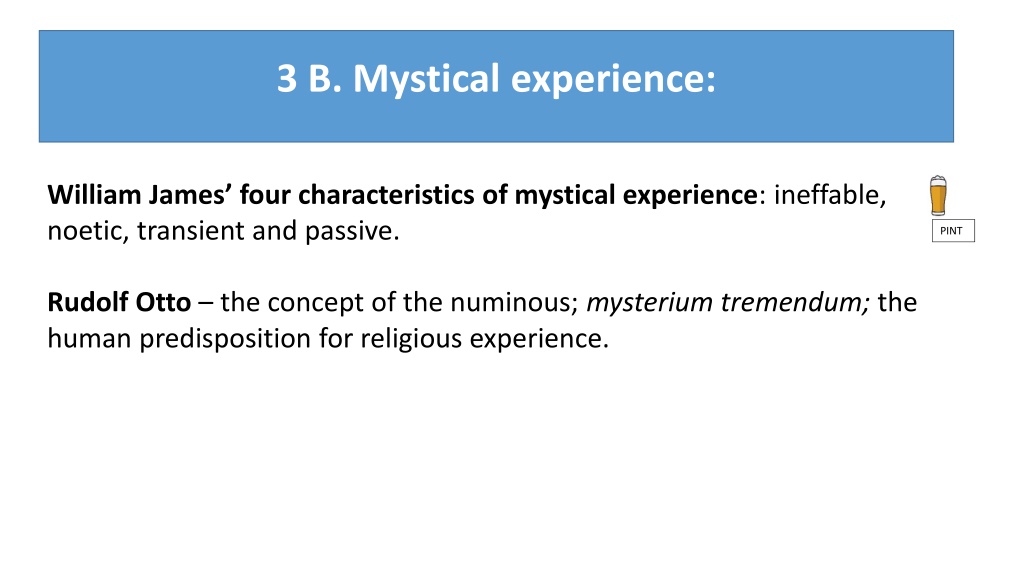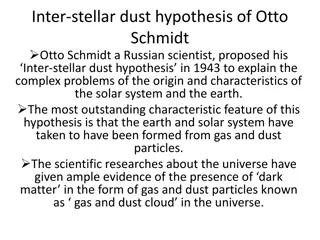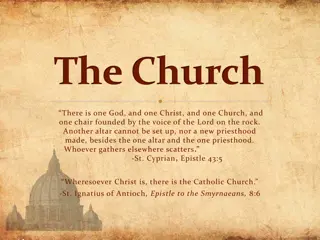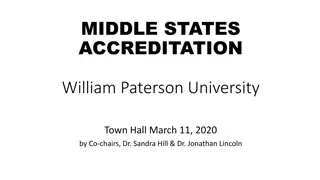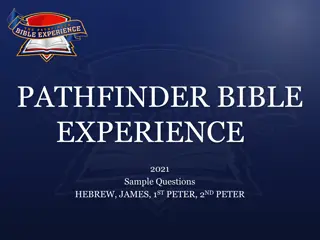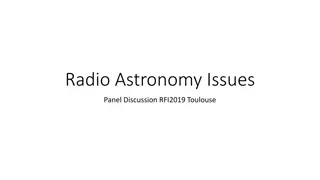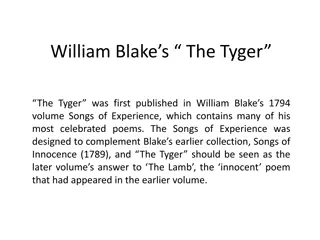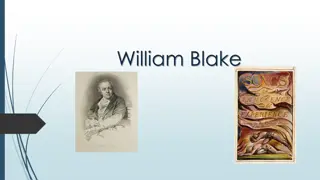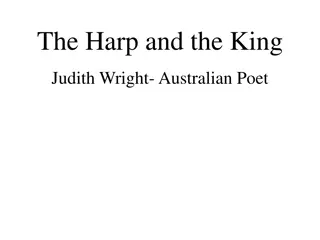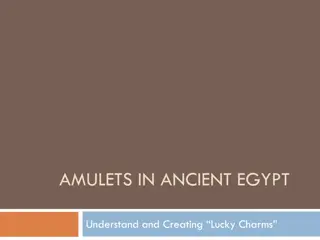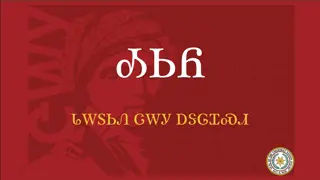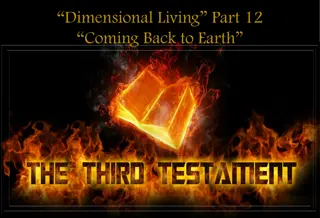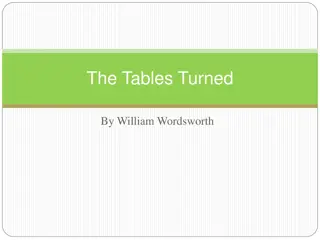Mystical Experience and the Numinous: William James and Rudolf Otto
William James identified four characteristics of mystical experiences as ineffable, noetic, transient, and passive. Rudolf Otto introduced the concept of the numinous, encompassing the mysterium tremendum, emphasizing the human propensity for religious encounters. The numinous experience is described as profound, awe-inspiring, and transcending ordinary perception, evoking feelings of wonder and terror.
Download Presentation

Please find below an Image/Link to download the presentation.
The content on the website is provided AS IS for your information and personal use only. It may not be sold, licensed, or shared on other websites without obtaining consent from the author. Download presentation by click this link. If you encounter any issues during the download, it is possible that the publisher has removed the file from their server.
E N D
Presentation Transcript
3 B. Mystical experience: William James four characteristics of mystical experience: ineffable, noetic, transient and passive. PINT Rudolf Otto the concept of the numinous; mysterium tremendum; the human predisposition for religious experience.
William James William James described four features of mystical experiences in Varieties of Religious Experience (1902). Gifford Lectures Edinburgh 1900-1902 In lectures 16 and 17, the concept of mysticism is addressed. By its nature as a personal occurrence, mystical experience cannot be defined in an absolute and universal way, although there are some general attributes. The experience is not usually predictable and as such might be defined as ephemeral in nature. The experience is often described by the subject as losing a sense of the self and being overcome by the Other. The subject of a mystical experience is left feeling a heightened insight or knowledge. In this sense, it is noetic and rooted in the mind.
Unutterable or too great for words. The experience a mystic has cannot be easily articulated. It is not easily understood by anyone else who has not experienced it.
3 B Definitions : Otto and the numinous A religious experience is an encounter with the numinous Numinous: being in the presence of an awesome power A numinous experience has three parts to it these are often referred to using a Latin phrase o
The numinous: Mysterium, tremendum et fascinans Numinous experience Mysterium The experience is wholly other , out- side the ordinary. It is experienced with blank wonder Tremendum The experience provokes terror, dread, awe Fascinans The experience has charm, fascination attractiveness despite its terror
An example of the numinous C.S. Lewis C.S. Lewis on the Numinous The numinous grips or stirs the mind powerfully and produces the following responses: Numinous dread. Otto calls the feeling of numinous dread, aka awe or awe-fullness, the mysterium tremendum. C.S. Lewis's illustration makes clear the nature of numinous dread and its difference from ordinary fear: 'Suppose you were told that there was a tiger in the next room: you would know that you were in danger and would probably feel fear. But if you were told "There is a ghost in the next room," and believed it, you would feel, indeed, what is often called fear, but of a different kind. It would not be based on the knowledge of danger, for no one is primarily afraid of what a ghost may do to him, but of the mere fact that it is a ghost. It is "uncanny" rather than dangerous, and the special kind of fear it excites may be called Dread. With the Uncanny one has reached the fringes of the Numinous. Now suppose that you were told simply "There is a mighty spirit in the room" and believed it. Your feelings would then be even less like the mere fear of danger: but the disturbance would be profound. You would feel wonder and a certain shrinking described as awe, and the object which excites it is the Numinous.' C.S. Lewis, 'The Problem of Pain' 1940.
Discuss: - Is there a difference in the type of fear being experienced when someone is afraid of i) a tiger ii) a ghost? - What is the uncanny ? - How could the sense of uncanny be explained? Try to account for it in both atheistic and theistic terms.
Examples of a religious experience which is numinous Moses and the burning bush At this Moses hid his face, because he was afraid to look at God Exodus 3: 6
Biblical examples of numinous experiences Acts 9: 1-10 Isaiah 6:5
